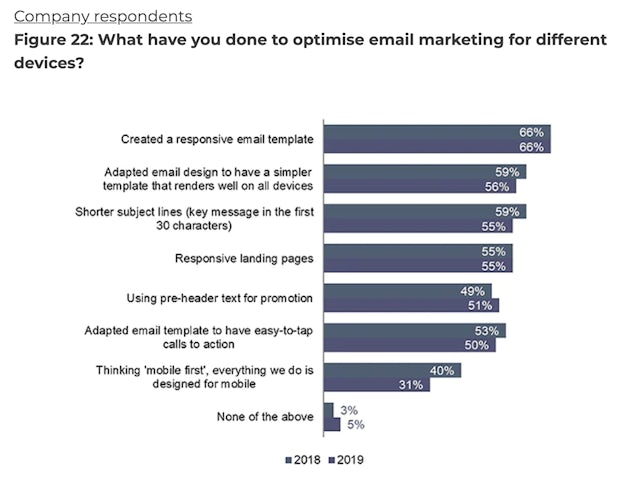Over half of marketers say that data integration is the most significant obstacle to implementing personalisation in emails.
This is according to Econsultancy’s 13th annual Email Marketing Industry Census, published in partnership with Upland Adestra.
You can find out much more by downloading the report in full, or read on for four key takeaways.
Difficulties with data
Econsultancy’s survey of more than 400 marketers revealed that personalisation is still a big priority, with 67% of respondents saying the thing they want to improve on is the practise of better personalisation. This means providing a far more tailored customer experience that takes into account individual needs and preferences, such as past purchase history.
There have been small improvements, with this year’s survey seeing a 4% increase in respondents saying they have the technological capabilities but are still in the process of fine-tuning the actual execution.
However, integrating data continues to be the biggest challenge for companies trying to implement personalisation, highlighted by 51% of respondents. This is often due to difficulty in unifying different sources of information, amplified by the plethora of different marketing platforms and tools available.

An increase in automation
As more companies aim to create relevant and personalised experiences, many are increasingly harnessing the power of marketing automation. This means drawing on data to automate campaigns in a way that improves efficiency and performance.
The 2019 census found that emails based on customer sign-ups and subscriptions are being employed the most, with 56% of companies saying they send automated emails based on this type of behaviour. This marks a big jump from the 46% who said the same thing last year.
The survey results do suggest that there is room for improvement, though. Only 26% of companies send out emails to lapsed customers, for example, leading to missed opportunities in tempting customers to re-purchase.
Device optimisation needed
Another area ripe for improvement is optimising for different devices. Rather disappointingly, 40% of companies describe their strategy for optimising email on different devices as basic, with a further 10% describing it as non-existent. This has shown no improvement since last year.
It appears to be a lack of time and resources which is holding back many marketers. Twenty four percent of respondents say that ‘a lack of time to make it happen’ is the main barrier to success when it comes to effectively optimising email campaigns for different devices.
This proportion has almost doubled, rising from 14% to 24% since 2018, suggesting that marketers are now focused on other areas (and optimising email for different devices has slipped down further on the list of priorities).

Looking to predictive tech
Finally, the census suggests that there will be greater use of predictive marketing technology in the near future, in line with the trend towards more data-driven and personalised marketing.
The use of predictive analytics solutions for scheduling and product selection has significantly increased for companies since 2018, rising this year from 34% to 41%. Similarly, 19% of agency respondents have fully implemented email scheduling with an automated solution, while a further 28% have partially implemented or trialled this.
As the most popular use case for predictive solutions, this suggests that it is the easiest place to start for many companies looking to capitalise on the power of AI.
For much more insight, subscribers can download the 2019 Email Marketing Industry Census in full
